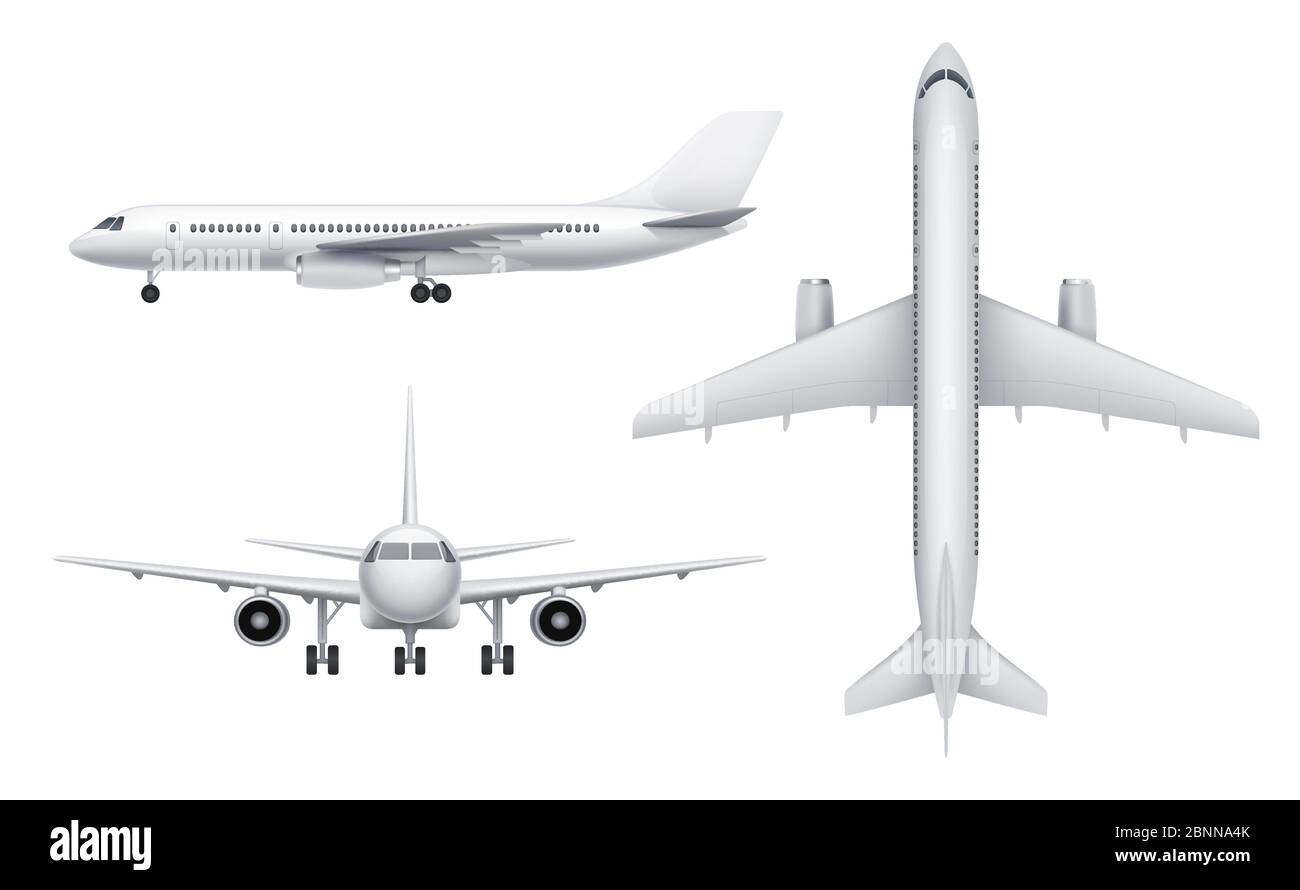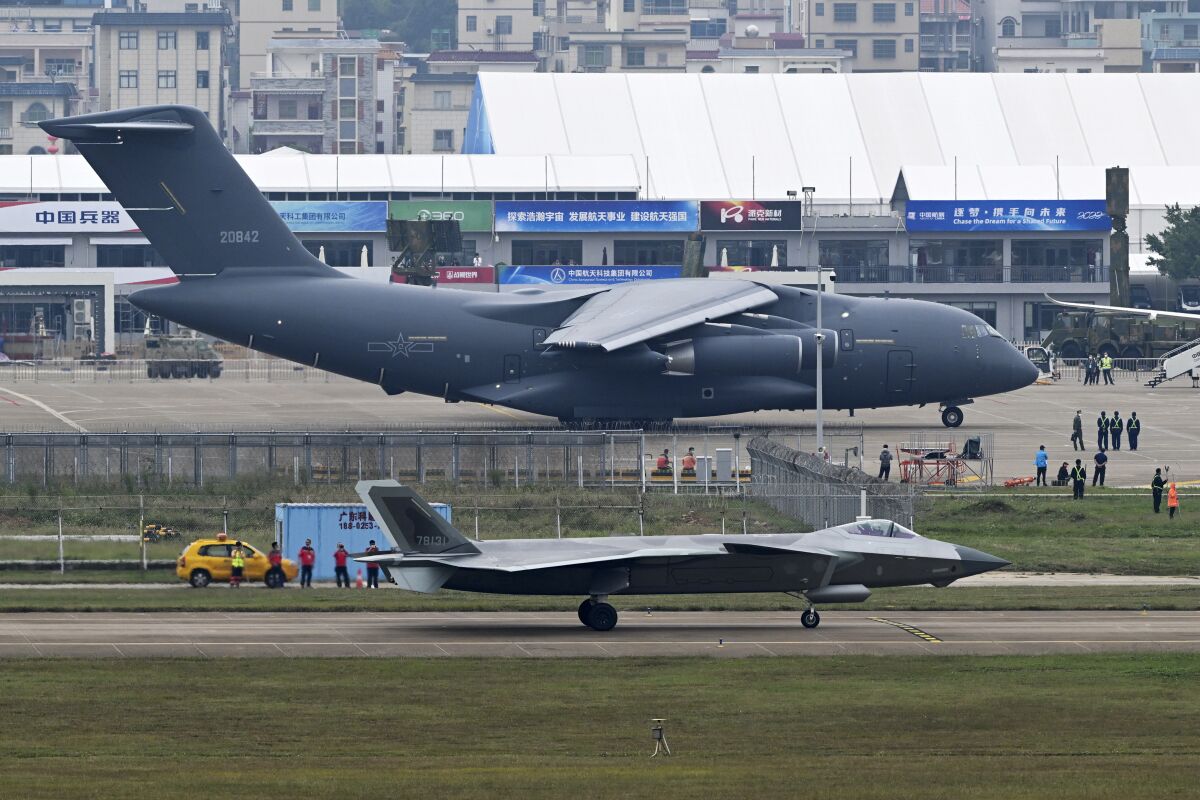Civilian Aircraft - An airplane is a type of aircraft for transporting passengers and air cargo. These planes are mostly used by airlines. Although the definition of an aircraft can vary from country to country, an aircraft is usually defined as an aircraft intended to carry a large number of passengers or cargo in commercial service. The largest are wide-body jets, also called twin-aisles, because they generally have two separate passages running from the front to the back of the passenger cabin. These are typically used for long-haul flights between airline hubs and major cities. The smallest and most common class of aircraft is the narrow body or single aisle aircraft. These are typically used for short or medium-haul flights with fewer passengers than their wide-body counterparts.
Regional jets typically carry fewer than 100 passengers and may be powered by a turbofan or turboprop. These airlines are offline partners of large aircraft operated by major airlines, legacy carriers and flag carriers, and are used to feed traffic to the airlines' main hubs. These regional routes form the backbone of the hub-and-spoke air transport model.
Civilian Aircraft
Short-haul feeder aircraft that carry small numbers of passengers (lightest aircraft, list of light transport aircraft) are called commuter, passenger, feeder carriers, and air taxis, depending on their size, engines, how they operate. are marketed, world region and seating configuration. The Beechcraft 1900, for example, has only 19 seats.
Civil Aircraft Poster (modern Aircraft)
When the Wright brothers made the world's first heavier flight, they laid the foundations for a huge transportation industry. The flights of the Wright Flyer in 1903,
This aircraft was upgraded to the more practical Ilya Muromets, equipped with dual controls for pilot and co-pilot and a comfortable cabin with toilet, heater and cabin lighting.
This large four-gin biplane was later adapted as the first bomber, before transport planes and later bombers.
It flew for the first time on December 10, 1913 and took off for its first demonstration on February 25, 1914 with 16 passengers. However, it was never used as a commercial aircraft due to the outbreak of the First World War, which caused military applications to take priority. .
Close Up Of A Control Panel Inside A Civilian Aircraft Cockpit Stock Photo
In 1919, after the First World War, a large number of ex-military aircraft flooded the market. One such aircraft was the Frch Farman F.60 Goliath, originally designed as a long-range heavy bomber; Beginning in 1919, a number were converted for commercial use into airliners, seating up to 14 passengers. and about 60 were built. Initially, a number of publicity flights were made, including on 8 February 1919, the Goliath flew 12 passengers from Toussus-le-Noble to RAF Kley, near Croydon, despite being denied landing permission by the British authorities. Dozens of early airlines bought the type.
In one notable flight, on 11 August 1919, an F.60 carried eight passengers and a ton of supplies from Paris to Casablanca and Mogador to Koufa, 180 km (110 mi) north of Saint-Louis, Segal, flying over 4,500 km. (2,800 mi).
Another important aircraft built in 1919 was the Airco DH.16; A redesigned Airco DH.9A with a wider fuselage to accommodate an enclosed cabin with seating for four passengers, plus the pilot in the operating cockpit. In March 1919, the first prototype flew at Hdon Airport. Nine aircraft were built, all but one of which were delivered to a new airline, Aircraft Transport and Travel, which used the first aircraft for pleasure flights, and on 25 August 1919, the airline established the first international service from London to Paris.

One aircraft was sold to the River Plate Aviation Company of Argentina to operate a river service between Buenos Aires and Montevideo.
Gallery Of Civilian Aviation Art By Darryl Legg
Meanwhile, Vickers competitors converted the successful World War I-era bomber, the Vickers Vimy, into a civilian version, the Vimy Commercial. It was redesigned with a larger diameter fuselage (mostly spruce plywood), and first flew from Joyce Gre Airport in Kt on April 13, 1919.
The world's first metal transport plane was the Junkers F.13, which also made its first flight in 1919.
Junkers marketed the aircraft to business travelers and commercial operators, and European businessmen purchased examples for their personal use and business travel. More than 300 Junker F 13s were built between 1919 and 1932.
It was used by the Dutch airline KLM, which entered the Amsterdam-London service in 1921. A fairly reliable aircraft for its time, the Fokker flew to destinations all over Europe, including Bremen, Brussels, Hamburg and Paris.
Cockpit Of A Huge Vintage Civilian Plane Isolated Stock Image
The Handley Page Company of England produced the Handley Page Type W, its first civilian transport aircraft. It accommodated a crew of two in the accommodation cabin and 15 passengers in an enclosed cabin. Powered by two 450 hp (340 kW) Napier Lion engines, the prototype flew for the first time on 4 December 1919, shortly after being displayed at the 1919 Paris Air Show at Le Bourget, Paris. Commissioned by the Belgian company Saba, the W Type was later produced under license in Belgium by SABCA.
In 1921, the Air Ministry ordered three aircraft, designated W. 8b, for use by Handley Page Transport, and later by Imperial Airways for services to Paris and Brussels.
It was a commercial success, initially serving the Paris-London route, and later the continent. The enclosed cabin can accommodate four passengers with an additional seat in the cabin. This became the Blériot-SPAD S.46. During the 1920s, English and French companies were at the forefront of the civil aviation industry.

In 1921, aircraft capacity needed to be increased to achieve better economy. The Glish de Havilland company makes the DH.29 monoplane with a capacity of 10 passengers,
The First Civilian Airplane Helicopter Hybrid Could Soon Go Into Production
While the DH.32, an eight-seat biplane with a more economical but more powerful Rolls-Royce Eagle engine, began to be designed.
The Ford Trimotor had two engines mounted in the wings and one in the nose, and a slab-sided body, carried eight passengers and was produced from 1925 to 1933.
It was an important early American airplane. It was used by the predecessor of Trans World Airlines, and by other airlines long after it ceased production. The Trimotor helped introduce many aspects of modern aviation infrastructure, including paved runways, passenger terminals, hangars, airmail, and radio navigation.
Pan Am opened transoceanic service in the late 1920s and early 1930s, based on a large seaplane: the Sikorsky S-38 and Sikorsky S-42.
Adam A500 Us Civilian Aircraft 1/72 A Model
In the 1930s, the airline industry matured and established large, strong national airlines with regular international services around the world, including Imperial Airways of England, Lufthansa of Germany, KLM of the Netherlands, and United Airlines of America. Multi-base aircraft are now capable of carrying dozens of passengers comfortably.
In the 1930s, the British de Havilland Dragon was created as a short-range, low-capacity aircraft. Its relatively simple design can carry six passengers, each with 45 lb (20 kg) of luggage, on the London-Paris route, with a fuel consumption of 13 gal (49 L) per hour.
DH.84 Dragon tered worldwide service. In early August 1934, One made the first non-stop flight between continental Canada and England in 30 hours and 55 minutes, although the original destination was Baghdad, Iraq.
It supports the British-built Dragon de Havilland Dragon Rapide, a faster and more comfortable successor.
Best Soviet And Russian Civil Aircraft
De Havilland invested in advanced features such as elongated rear windows, cabin heating, thicker wingtips and a stronger fuselage for a 5,500 lb (2,500 kg) higher gross weight.
Later aircraft were among the first to be equipped with enclosures to improve landing performance, along with downward-facing identification lights and metal propellers, which were often installed on older aircraft.
It flew in the first half of the decade, but the more powerful, faster Douglas DC-3 with 21-32 passengers first appeared in 1935. The DC-3 was produced in large numbers during World War II and later sold as surplus, and converted. extended in the commercial sector. It was the first airline to make a profit without the help of the Post Office or government subsidies.
Long-haul flights became widespread in the 1930s, when Pan American Airways and Imperial Airways competed for transatlantic travel using a fleet of aircraft such as the British Short Empire and the American Boeing 314.
Civilian Jet Antonov An 26 Nato Reporting Name: Curl Aircraft In Blue Sky. Airplane`s Fuselage Editorial Photography
At the time, airframes were the only practical way to build an aircraft that would underperform land based aircraft.
A Boeing 314, registration NC18602, became the first commercial airliner to circumnavigate the globe between December 1941 and January 1942.
In the United Kingdom, the Brabazon Commission was established in 1942 under John Moore-Brabazon, 1st Baron Brabazon of Tara, in the post-war British Empire (to anticipate advances in aircraft technology and air transport needs in South Asia, Africa and Near and Long Range). East) and Commonwealth (Australia, Canada, New Zealand).

For British use, the multi-line aircraft type was reportedly split between the US for military transport aircraft and the UK for heavy bombers.
Military Aircraft And Civilian Aircraft Stock Vector
British aircraft manufacturers had to meet military requirements and had no discretionary ability to deal with other concerns during the war.
The commission's final report recommended four designs for the British state-owned airline
Citation sovereign for sale, citation sovereign, citation aircraft, citation sovereign range, citation sovereign 680, sovereign aircraft, cessna citation sovereign range, cessna citation sovereign, citation sovereign jet, cessna citation sovereign 680, citation sovereign price, cessna citation sovereign price

0 Comments